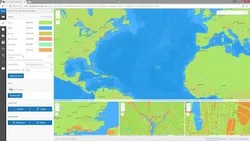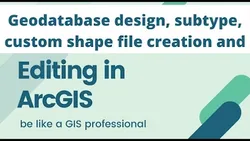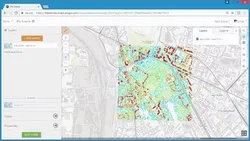
ArcGIS Living Atlas of the World 
ArcGIS Living Atlas of the World is an extensive collection of geographic information from around the world. It provides users with maps, apps, and data layers to support their work. It is the go-to source for anyone looking for reliable and up-to-date global information. ▼
ADVERTISEMENT
Course Feature
![]() Cost:
Cost:
Free
![]() Provider:
Provider:
Youtube
![]() Certificate:
Certificate:
Paid Certification
![]() Language:
Language:
English
![]() Start Date:
Start Date:
On-Demand
Course Overview
❗The content presented here is sourced directly from Youtube platform. For comprehensive course details, including enrollment information, simply click on the 'Go to class' link on our website.
Updated in [February 21st, 2023]
Learners can explore the world of geography and GIS with ArcGIS Living Atlas of the World. With this online course, they can unlock the exciting world of learning and discover a wealth of geographic information. They can learn how to use maps, apps, and data layers to support their work, and gain an understanding of the global landscape. They can also explore the development direction of GIS and gain insights into the latest trends in the field. Finally, they can draw conclusions from their findings and apply them to their own projects. With ArcGIS Living Atlas of the World, learners can unlock the exciting world of learning and gain a comprehensive understanding of the global landscape.
[Applications]
Students who have completed the ArcGIS Living Atlas of the World course are encouraged to apply their knowledge to their own projects. They can use the maps, apps, and data layers to create their own maps, analyze data, and develop applications. Additionally, they can use the Living Atlas to explore the world and gain a better understanding of global issues.
[Career Paths]
1. GIS Analyst: GIS Analysts use geographic information systems (GIS) to analyze and interpret data to create maps, reports, and other visualizations. They are responsible for collecting, organizing, and analyzing data from a variety of sources, such as satellite imagery, aerial photography, and field surveys. GIS Analysts are in high demand as the use of GIS technology continues to grow and expand.
2. GIS Developer: GIS Developers are responsible for designing, developing, and maintaining GIS applications and systems. They use programming languages such as Python and JavaScript to create custom GIS solutions for their clients. GIS Developers must have a strong understanding of GIS technology and be able to work with a variety of data sources.
3. GIS Technician: GIS Technicians are responsible for the day-to-day maintenance and operation of GIS systems. They are responsible for troubleshooting and resolving technical issues, as well as providing technical support to users. GIS Technicians must have a strong understanding of GIS technology and be able to work with a variety of data sources.
4. GIS Data Scientist: GIS Data Scientists use GIS technology to analyze and interpret data to create maps, reports, and other visualizations. They are responsible for collecting, organizing, and analyzing data from a variety of sources, such as satellite imagery, aerial photography, and field surveys. GIS Data Scientists are in high demand as the use of GIS technology continues to grow and expand.
Course Provider

Provider Youtube's Stats at AZClass
Discussion and Reviews
0.0 (Based on 0 reviews)
Explore Similar Online Courses

Learn Coding by making Games in Unity

SOLIDWORKS Class 6 : SOLIDWORKS Basic Assemblies

Python for Informatics: Exploring Information

Social Network Analysis

Introduction to Systematic Review and Meta-Analysis

The Analytics Edge

DCO042 - Python For Informatics

Causal Diagrams: Draw Your Assumptions Before Your Conclusions

Whole genome sequencing of bacterial genomes - tools and applications

Deep Learning

How to create new shape file and geodatabase in ArcGIS


Start your review of ArcGIS Living Atlas of the World